Send WhatsApp Messages
You can send WhatsApp messages through Contact Program Canvas from the ORACLE Eloqua application. You can send custom messages, messages with templates supporting images, videos, documents link, and footers.
To send WhatsApp messages through Contact Program Canvas, perform the following steps:
- Log in to the ORACLE Eloqua account.
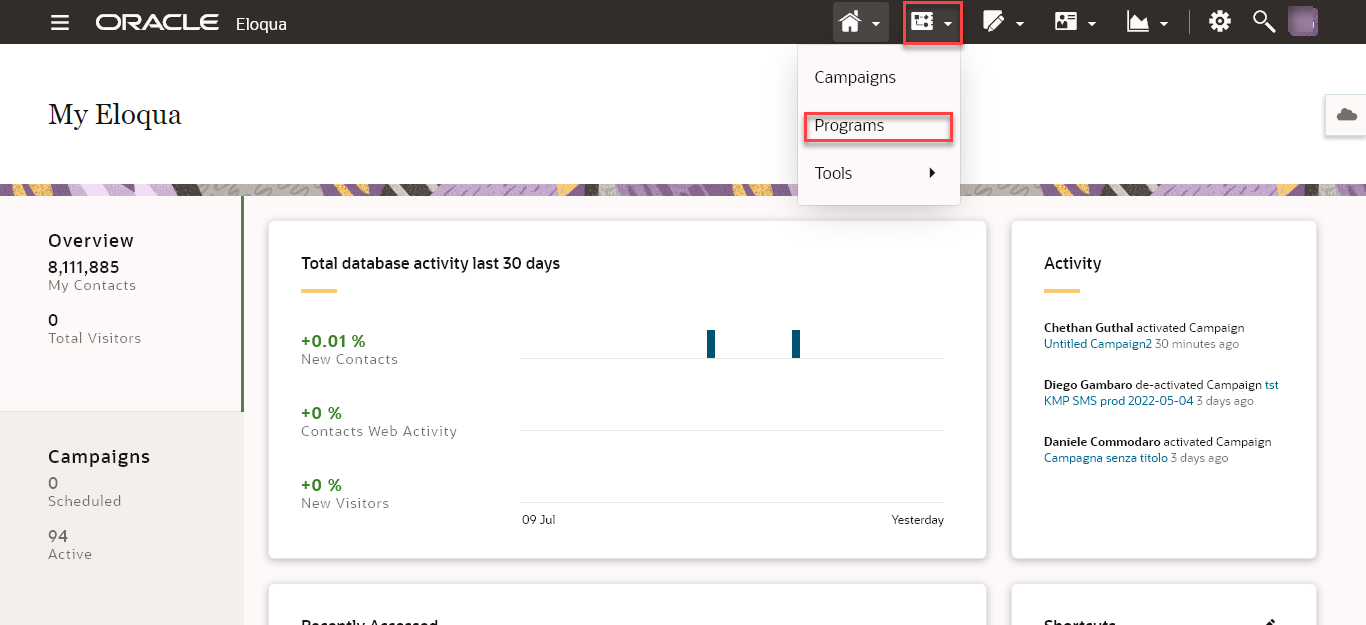
- Select Programs from the ORACLE Eloqua menu bar.
The Programs page appears.

- Click Create a Contact Program.
The Template Chooser appears.

- Select Blank Contact Program and then click Choose button.
A blank canvas appears where you can drag and drop elements to start building your program.
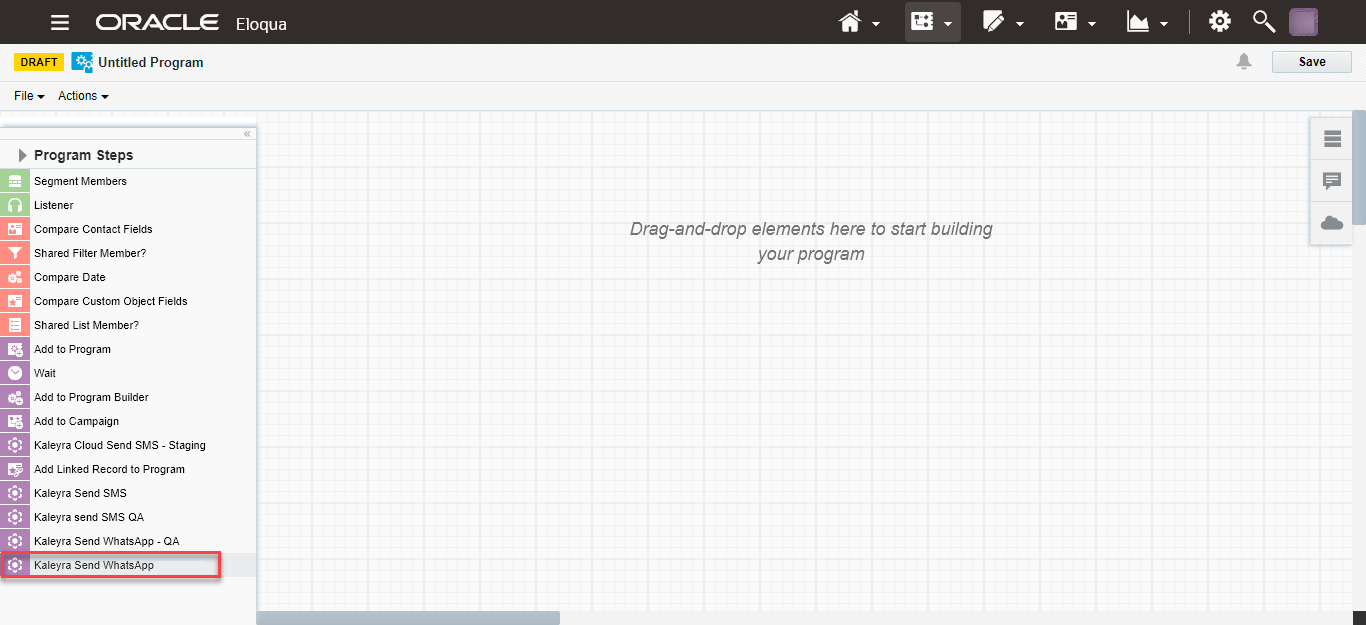
- Drag and drop the Kaleyra Send WhatsApp element.
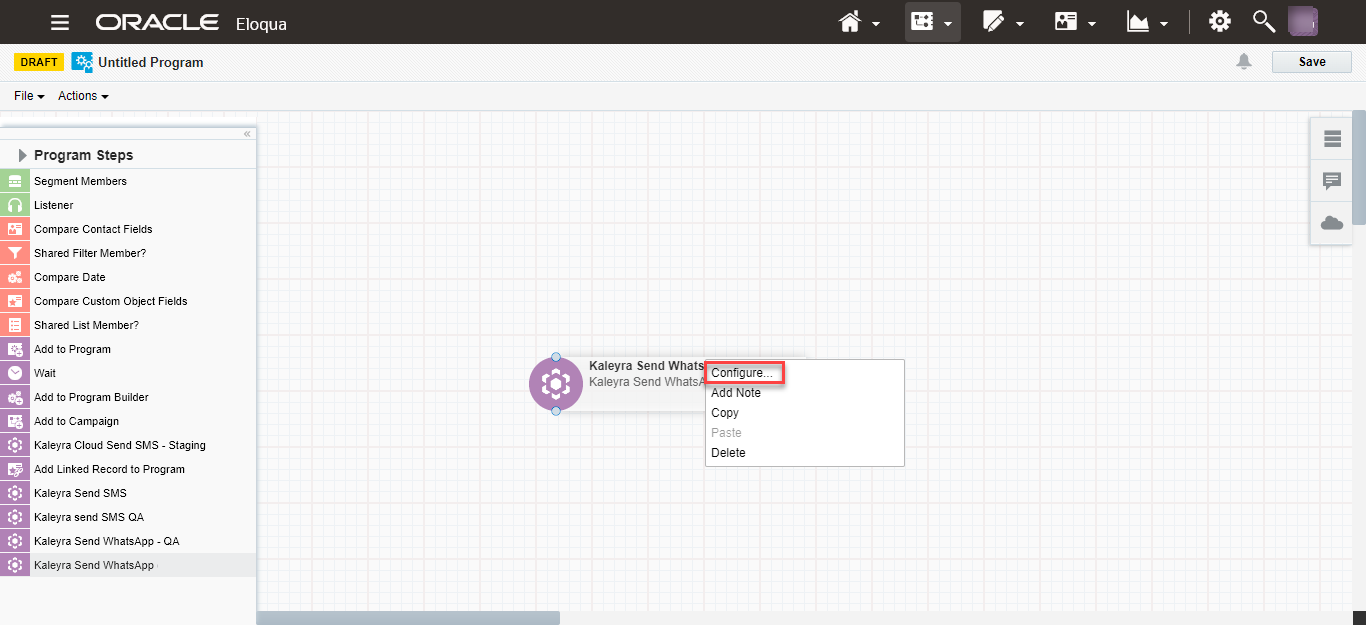
- Right-click over the Kaleyra Send WhatsApp and select the Configure option to create the content of your message.
The Step name appears. - Click the Edit icon.
The Cloud Action Configuration appears.
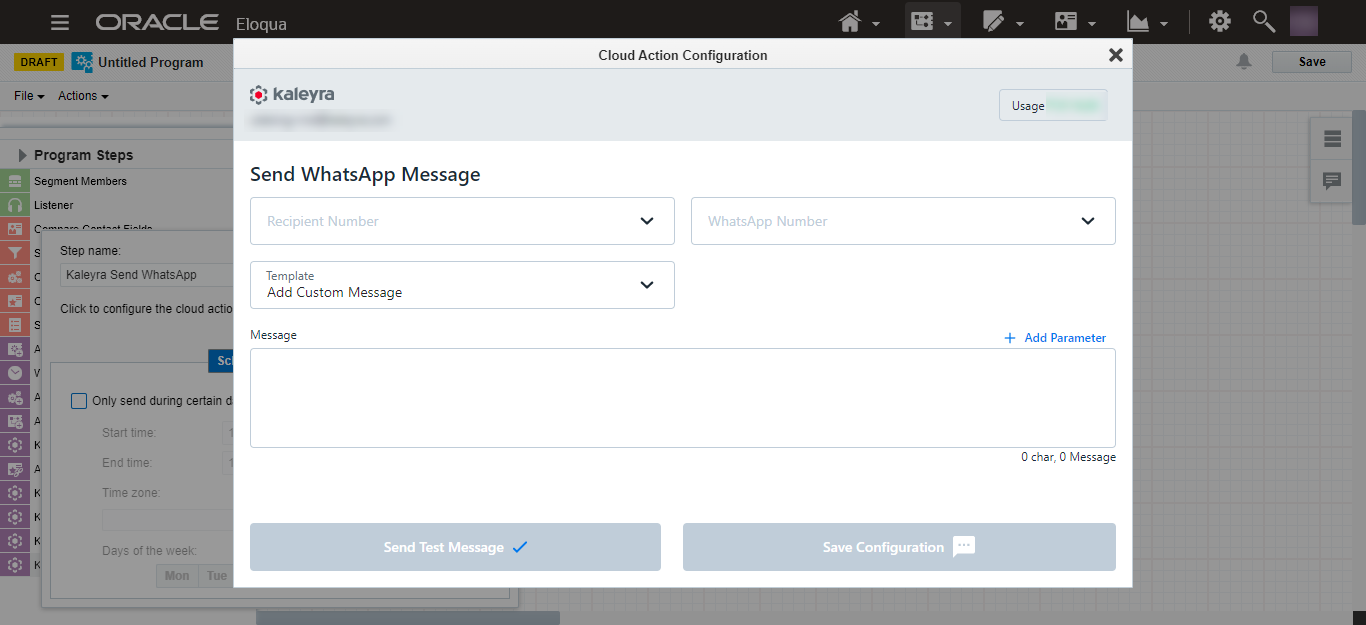
- In the Recipients Number field, click the arrow next to Recipients Number to view the list. Select the recipient's number from the list.
- In the WhatsApp Number field, click the arrow next to WhatsApp Number to view the list. Select the number from the list through which you wish to send WhatsApp messages.
- In the Templates field, click the arrow next to Templates to view the list. Select one of the following templates types:
- Add Custom Message - You can add a custom message without using any templates. You can add parameters and define their value or set it as default from the available lists in the Add Parameter.
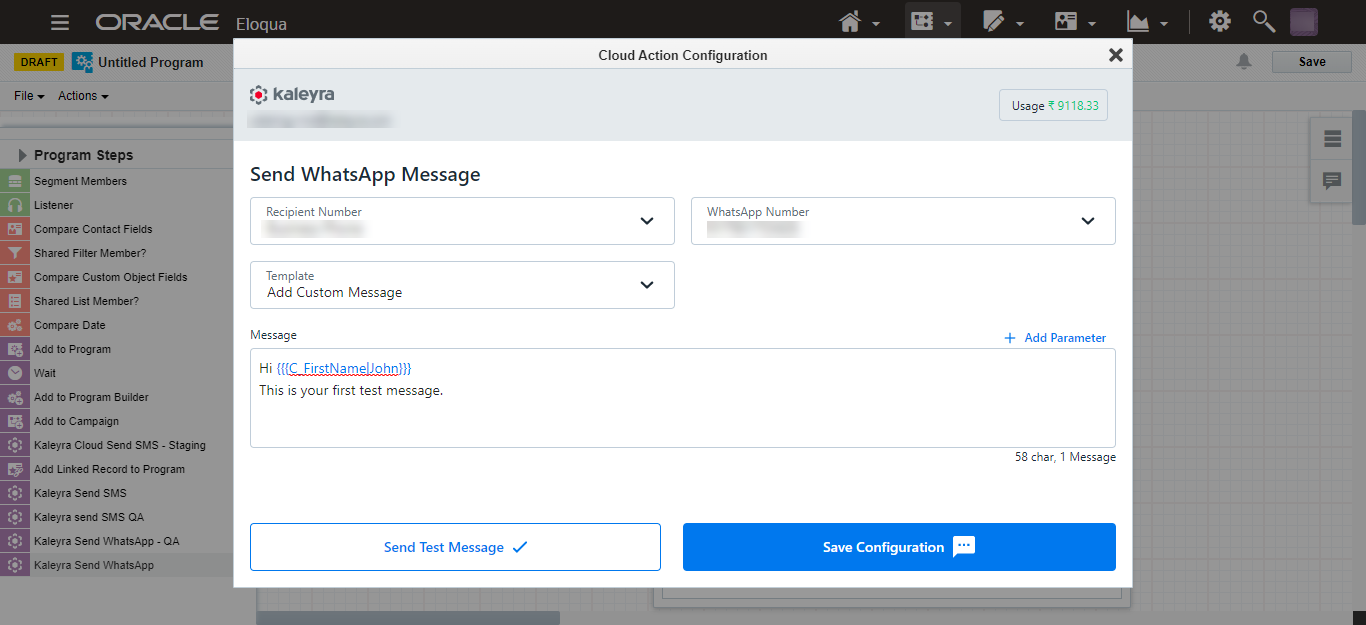
- Message - You can compose a message in multiple ways:
- Use static message content through a template or compose a message directly.
- Insert dynamic parameters to your message content using the Add Parameter feature.
- +Add Parameter
i. Click on the + icon OR Add Parameter link. The Add parameter consists of three open and close curly braces {{{}}}.

ii. Click the arrow next to Map to field to view the list. Supported fields are Contact Personalization and CDO Personalization.
iii. Default Value - Enter the default value and click Save.
The added parameter will be displayed in the Message field.
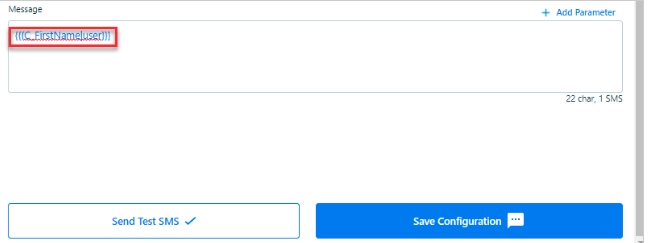
Note:If the added parameter has no value, then it will return to the Default Value in the Message section.
- A message with attachment - You need to provide the media (document/video/image) URL. If any variable is defined in the Message field, you have the option to determine its value or set it as default. For more information on how to create templates, see Adding WhatsApp Templates.
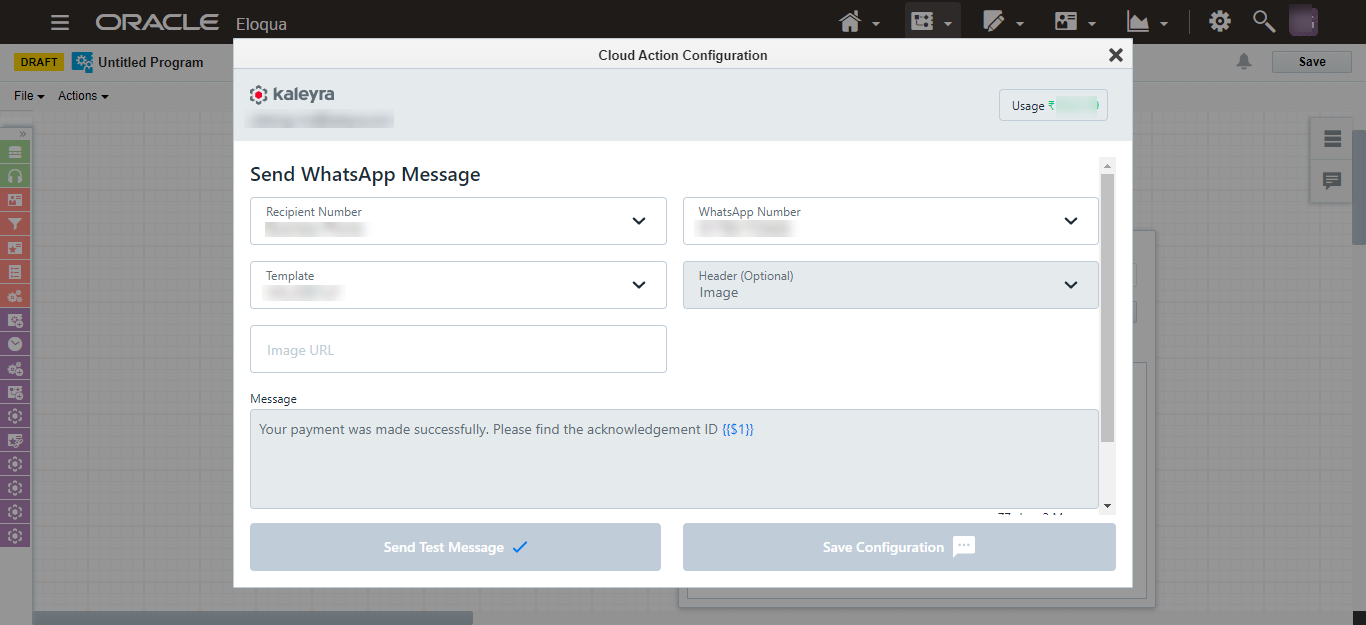
- Header None - You do not have the option to add any messages in the text box. The defined message in the Message field will be delivered to recipients. If any variable is defined in the Message field, you have the option to define its value or set it as default. For more information on how to create templates, see Adding WhatsApp Templates.
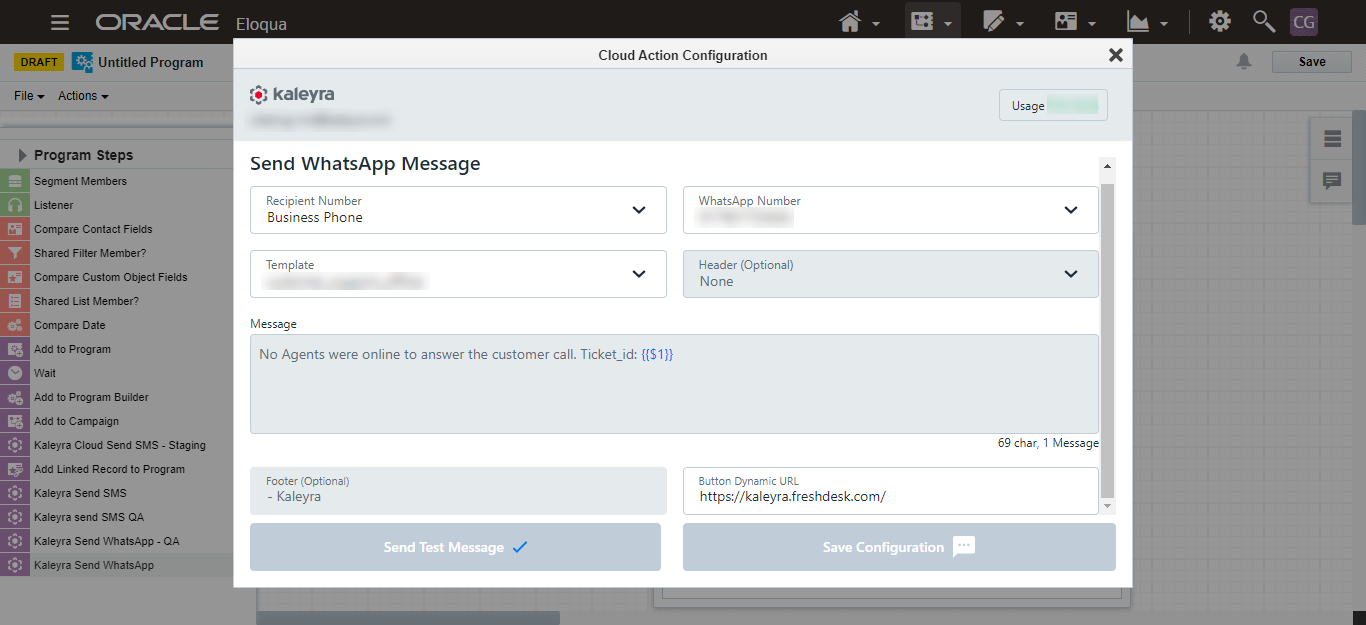
- Footer - If the footer is enabled in the template, you can add a footer in your WhatsApp message using the Button Dynamic URL field. The default URL is https://www.kaleyra.com, you have to add the footer to it based on your requirements.
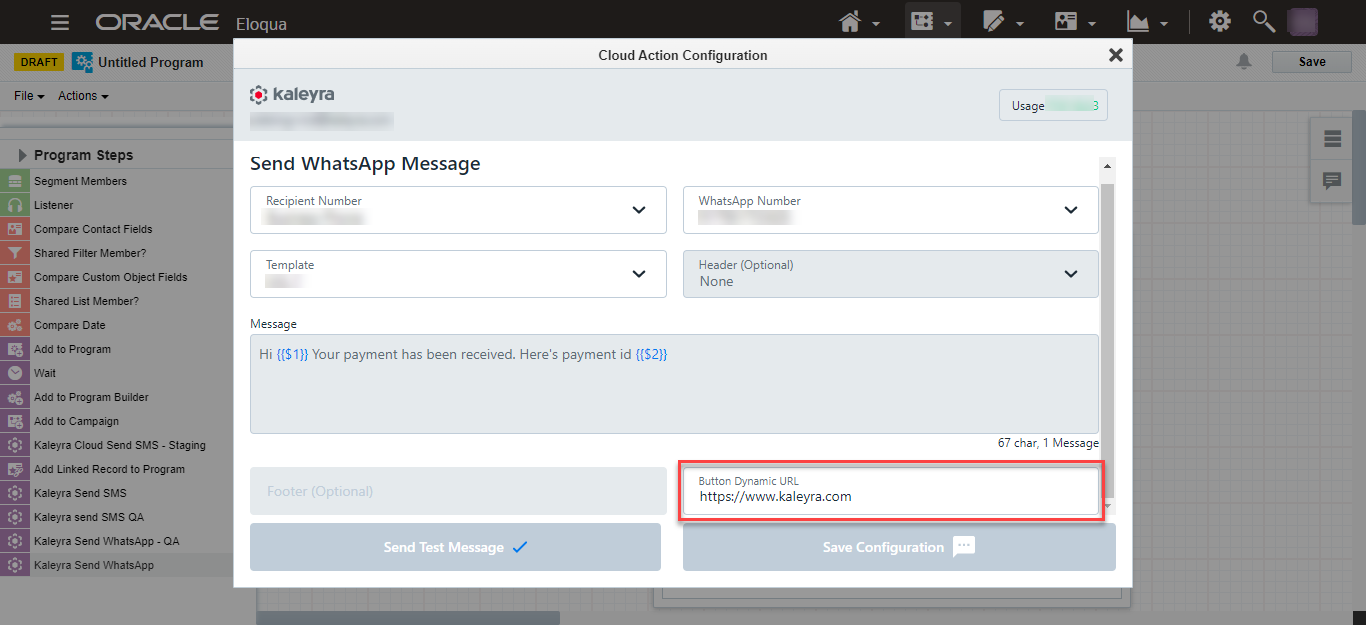
- (Optional) Click Send Test Message to send a test message. In the Send Test Message to field, enter your number with your country code. Click Send Test Message. The confirmation message Test Message has been sent. Did you receive the test Message ? appear, select based on whether you have received the message.
- Click Save Configuration and click (x) to close the Cloud Action Configuration.
- Verify and activate the campaign to trigger.
Updated 6 months ago
